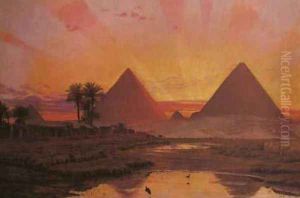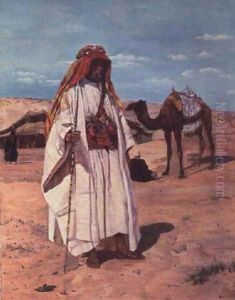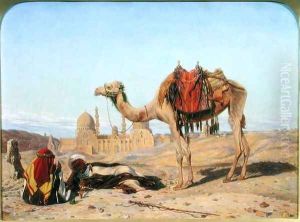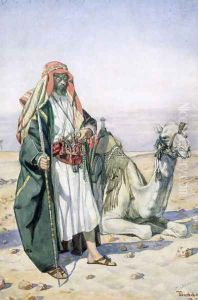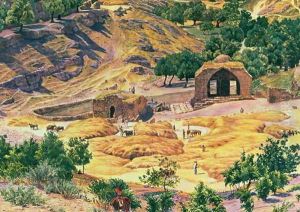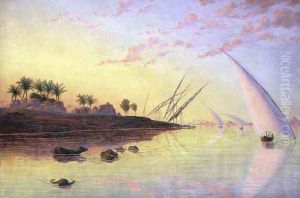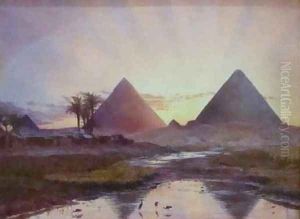Thomas Seddon Paintings
Thomas Seddon was a British landscape painter associated with the Pre-Raphaelite Brotherhood, known for his detailed and vivid landscape paintings. Born on August 28, 1821, in London, Seddon grew up in a family with a successful cabinet-making business. Despite the family trade, Seddon pursued his passion for art, initially studying under John Varley, a watercolourist, and later at the Royal Academy.
Seddon's work was greatly influenced by the Pre-Raphaelite principles of truth to nature, detailed observation, and vivid color. He was particularly inspired by John Ruskin's theories on art and nature, which emphasized the importance of painting the natural world with precision and devotion. Although not an official member of the Pre-Raphaelite Brotherhood, Seddon was closely associated with them, especially with painters like William Holman Hunt and John Everett Millais, who were leading figures of the movement.
One of Seddon's most famous works is 'Jerusalem and the Valley of Jehoshaphat from the Hill of Evil Counsel', painted in 1854-1855. This painting exemplifies his meticulous approach to landscape painting, with its fine detail and intense colors. The work was created during Seddon's travels to the Middle East, a journey that had a significant impact on his artistic development.
Seddon's career was cut short by his untimely death from dysentery in Cairo, Egypt, on November 23, 1856, at the age of 35. His body was returned to England and buried at Highgate Cemetery in London. Despite his brief career, Seddon's works had a lasting impact on the development of landscape painting and are considered important contributions to the Pre-Raphaelite movement. His paintings can be found in various art galleries and collections, including the Tate Britain and the Victoria and Albert Museum.
